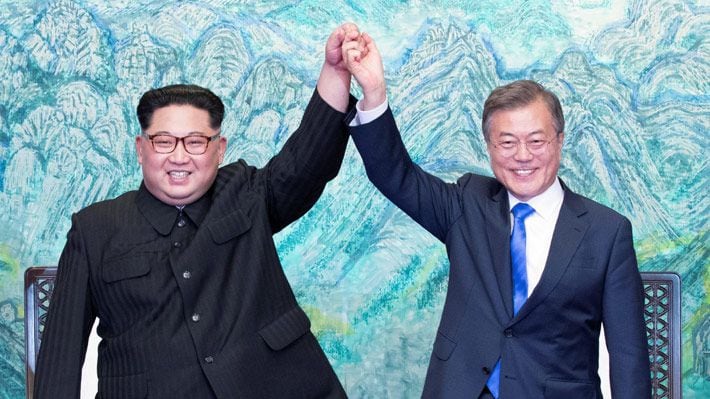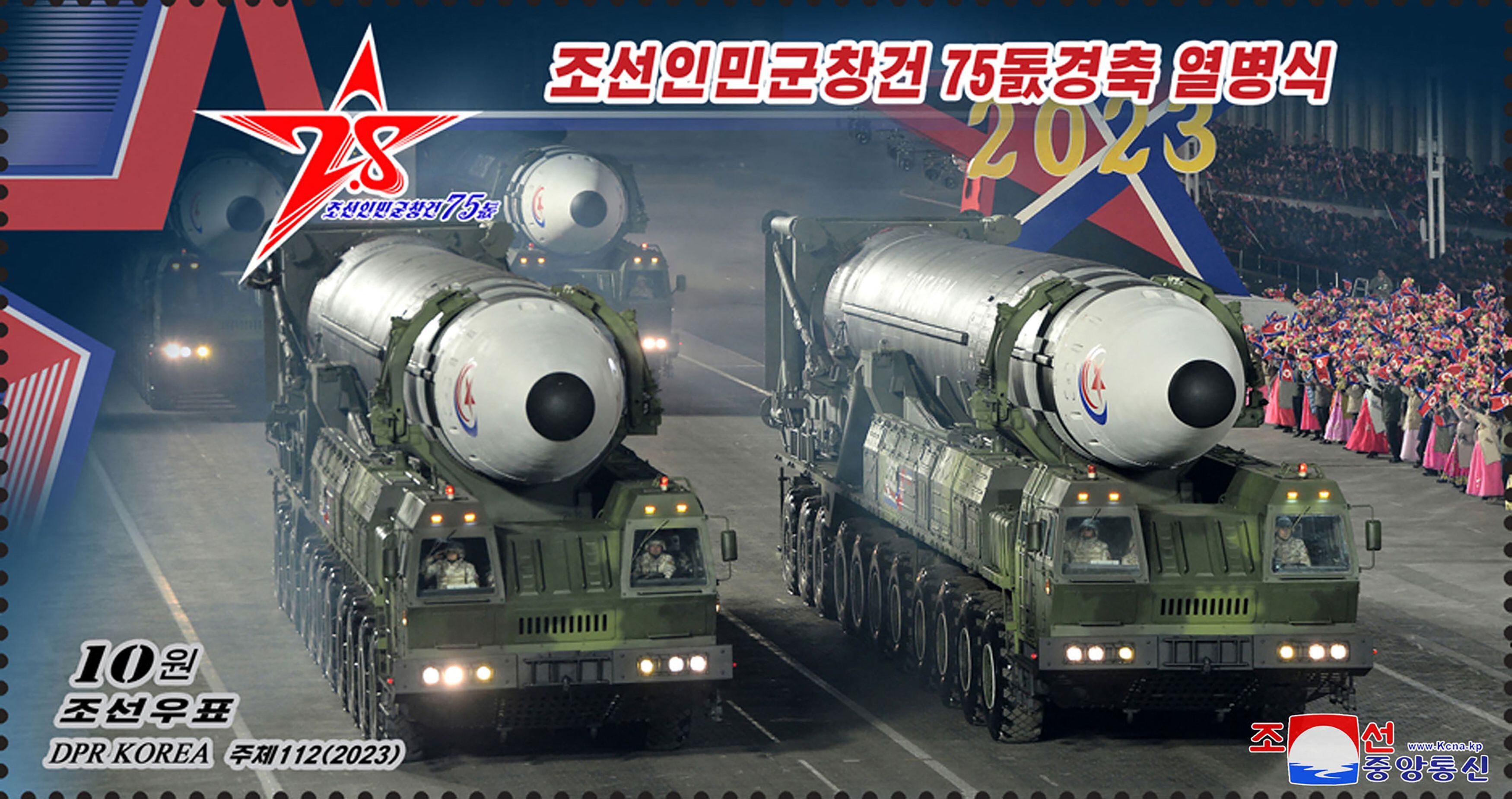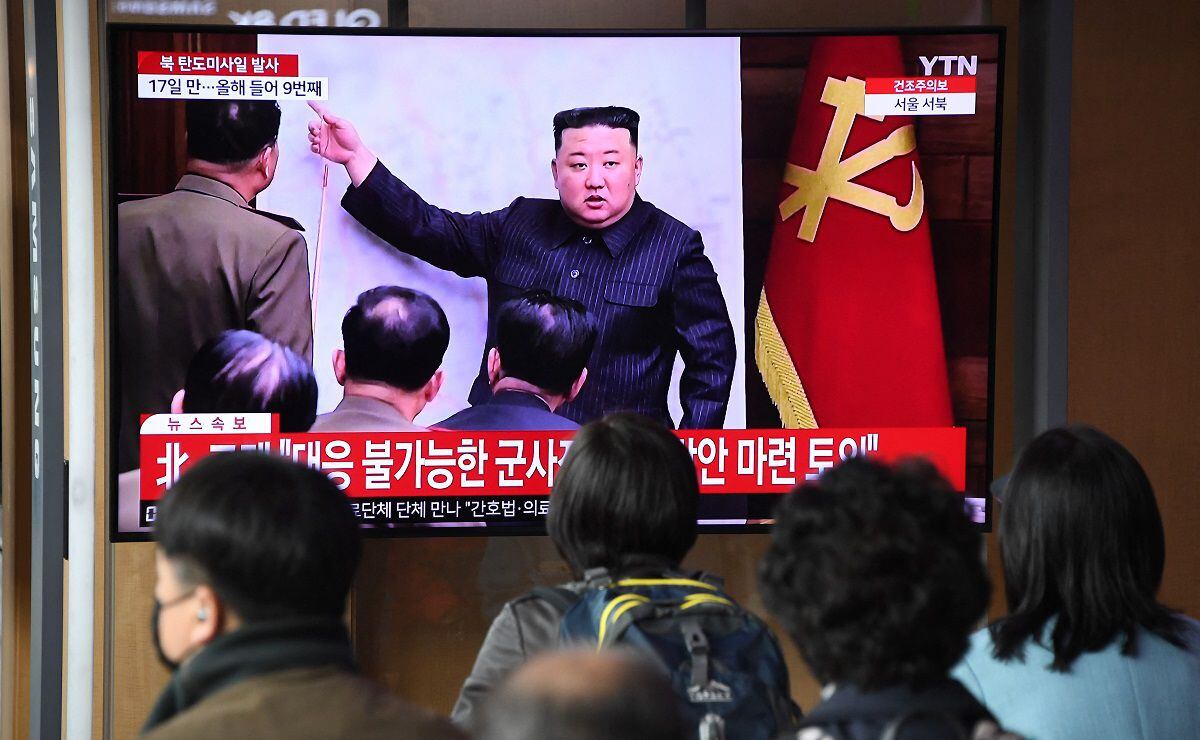Tension on the Korean peninsula is reaching one of its highest points in recent years, amid a series of North Korean weapons tests and joint military maneuvers between the armies of USA, South Korea and Japan.
READ ALSO: How North Korea’s new most powerful ballistic missile is designed to hit the US
In this sense, this Monday the 17th the three allies carried out naval military tests in the Sea of Japan in what was considered a security test before the acts “provocative” of Pyongyang.
The most recent of those provocations occurred on Thursday the 13th, when the North Korean regime tested its new Hwasong-18, a solid-fuel intercontinental ballistic missile (ICBM), launching it over the Sea of Japan and causing the alarms to go off in Japanese territory.
With the Hwasong-18 test North Korea It has already launched some 100 missiles since the beginning of 2022, many of which are capable of reaching the United States and its two main allies in the region.
The situation has undoubtedly led to the peninsula heating up in a threatening way.
ALLIES RECONCILED
Although USA He usually carries out this type of exercise with Seoul and Tokyo, the truth is that the participation of the three actors together is a particularity that has not been witnessed for at least five years.
This is because Japan and South Korea They saw their relationships cool down due to some specific episodes. “In 2018 there were two problems between Tokyo and Seoul. The first was a South Korean court verdict forcing some Japanese companies to pay compensation because during the Japanese invasion in World War II they took Korean workers to do forced labor. Those workers demanded reparation and justice ruled in their favor. On the other hand, that same year a South Korean frigate put a Japanese military plane on its radar and generated an episode of tension.”, he explains to Trade the director of the Center for Asian Studies of the National University of San Marcos, Carlos Aquino.
On the other hand, explains the expert, the position of the former South Korean president, Moon Jae-in, was influential, who was reluctant to this type of exercise and rather bet on a rapprochement with Pyongyang, which did not leave any major results.

The factor that would end up approaching seoul and tokyo again it would be, ironically, the common enemy: North Korea. On that board, according to Aquino, USA he would have played a key role in urging both to put aside differences to bolster security.
“A month ago, the new South Korean president visited Japan for the first time in 12 years. Today there are South Korean ministers in Tokyo to restart joint collaborations to share information on North Korean missiles”, highlights the expert.
The exercises between the three parties restarted in February. The test this Monday the 17th was carried out in the Sea of Japan and included three destroyers, they reported in a statement collected by the Yonhap news agency.
In previous weeks it was learned that the three militaries had also carried out tests of their air forces, with South Korean fighter planes and at least one American fighter jets firing air-to-air and air-to-ground missiles with the intention of testing their ability to neutralize a North Korean nuclear threat. .
THE WEAPONS OF PYONGYANG
The North Korean test last Thursday caused millions of Japanese to receive a J-Alert on their devices. Said alarm urged citizens to evacuate and seek refuge in the event of a possible missile fall on the island of Hokkaido and was raised only after 30 minutes.
On Friday the 14th it was revealed that the missile fired had been a solid fuel Hwasong-18, a North Korean state-of-the-art weapon that had been presented in February 2023 during a military parade.
That Pyongyang has been able to develop a solid fuel missile in just 9 years reflects tireless work behind it, remembering that the same thing was possible in China after 19 years of research and in India after 13 years.
“Unlike all the missiles it had launched, the Hwasong-18 requires much less preparation to launch, making it more difficult to detect. In addition, it has a longer range and it is more difficult to determine where it will land because its trajectory is irregular. That is why the alert was unleashed in Japan last ThursdayAquino explains.
This test is in addition to the one carried out a few weeks ago by Pyongyang in which it tested a new nuclear-powered underwater drone that, according to Pyongyang, “could cause radioactive tsunamis capable of penetrating coastal waters”.

GEOPOLITICAL DASHBOARD
Said drone brings to mind the feared Poseidon system developed by Russia and which became better known during the current war in Ukraine due to the threat it represents to the European continent.
This relationship would not be accidental because, according to Aquino’s analysis, what we would be witnessing would be the alignment of two sides in an international conflict that would be moving to Asia.
“One undeniable thing is that closer collaboration is seen between North Korea and Russia. A situation is setting up where the North Koreans are more aggressive and the Russians are offering support, as is China. It is seen that Pyongyang has support from both. This has caused the allies to seek to strengthen their ties in the face of the threat”, says the expert.

Aquino recalls that part of this tension could be seen during the historic visit of Japanese Prime Minister Fumio Kishida to Ukraine at the end of March. While the Asian president boarded the train to kyiv, Russia sent two Tupolev 95MS planes -capable of carrying nuclear charges- to fly over the Sea of Japan for seven hours.
On the other hand, the analyst highlights that these tensions are also reflected in the new debates that have been opened in Asian nations. “A situation is taking shape: on the one hand, China, Russia and North Korea; on the other, the United States, Japan and South Korea. That is why Japan has also announced that it will increase its military spending, it will go to 2% of its GDP in the coming years. South Korea is now openly discussing whether it should have the atomic bomb, something previously only discussed in academia. An arms race is definitely coming in the region“, it states.
Source: Elcomercio
I am Jack Morton and I work in 24 News Recorder. I mostly cover world news and I have also authored 24 news recorder. I find this work highly interesting and it allows me to keep up with current events happening around the world.

:quality(75)/cloudfront-us-east-1.images.arcpublishing.com/elcomercio/S5RFQZ4TGND7NADP323XJ6VN2U.jpg)


:quality(75)/cloudfront-us-east-1.images.arcpublishing.com/elcomercio/B2NFBY4FE5HIRAL7O2XADJ5V7Q.jpg)


